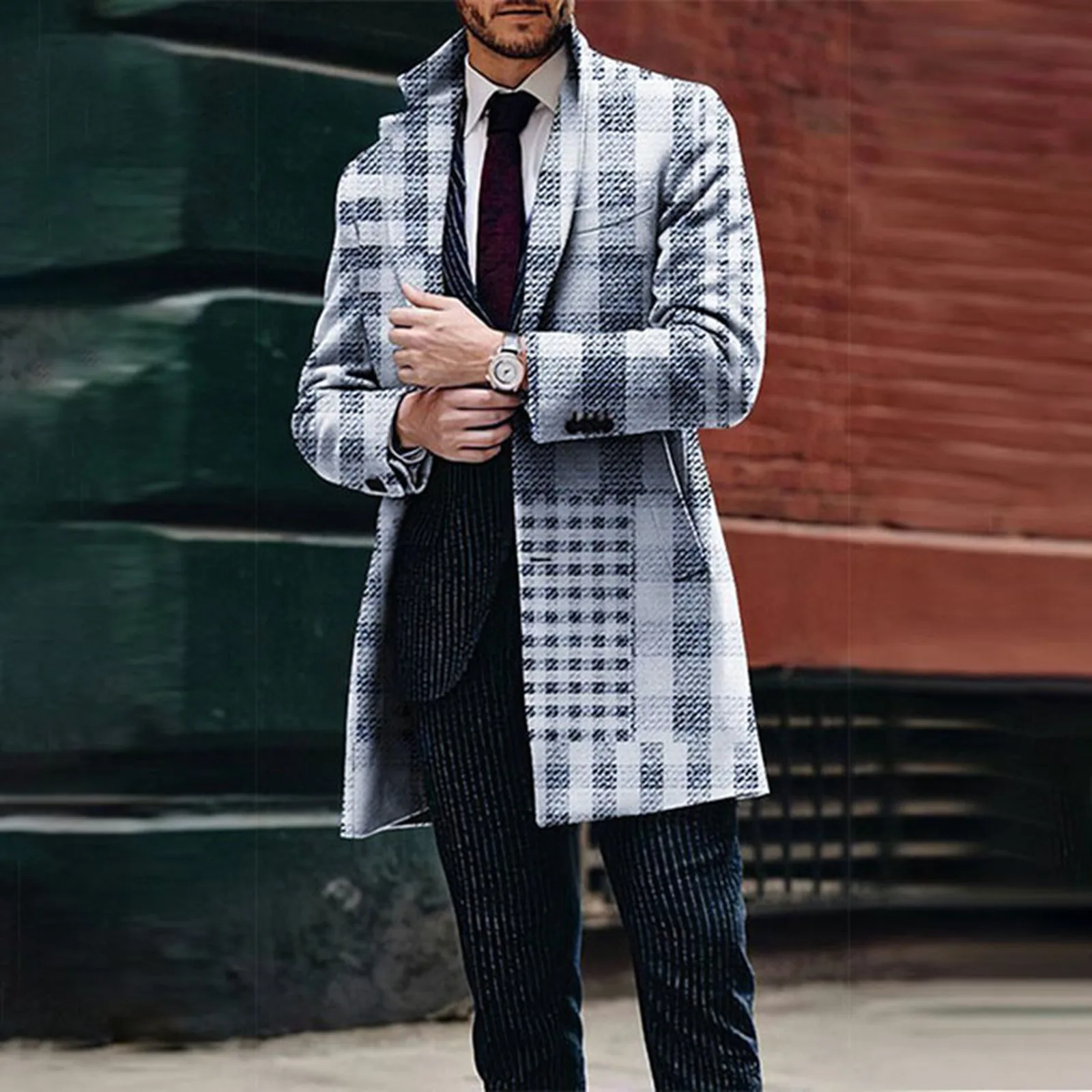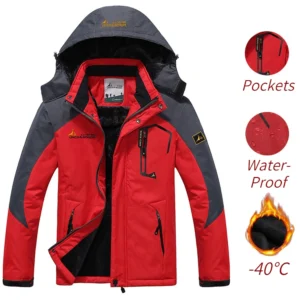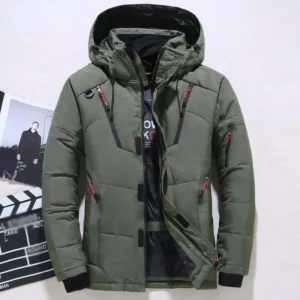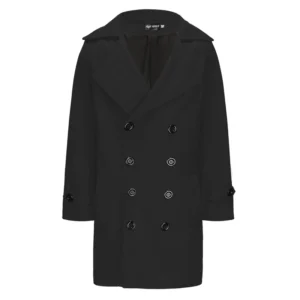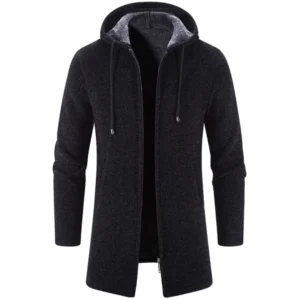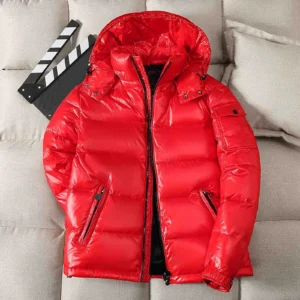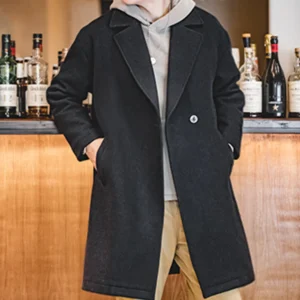1. Introduction: Choosing Between Warmth and Style
When winter winds howl and temperatures plummet, a quality overcoat becomes not just an accessory but an essential investment. Among premium cold-weather options, wool and down overcoats stand as the undisputed champions, each offering exceptional protection through distinctly different approaches.
These materials represent two fundamentally different paths to winter warmth:
- Wool offers natural insulation with classic sophistication and reliable performance
- Down delivers remarkable warmth-to-weight ratio with modern technical advantages
- Both materials present different strengths in weather resistance, durability, and styling
Making the right choice between wool and down involves understanding how these materials perform in various conditions, how they’ll complement your wardrobe, and how they align with your lifestyle needs. Proper coat length also plays a crucial role in this decision, affecting both warmth and style.
Before investing hundreds of dollars in premium outerwear that should last many winters, let’s explore the essential differences that will guide your decision between these two excellent but distinct options.
2. Materials and Construction: Understanding the Foundations
To appreciate the performance differences between wool and down overcoats, we must first understand what these materials actually are and how they function.
Wool: Nature’s Technical Fiber
Wool comes primarily from sheep, with several varieties offering different characteristics:
- Regular wool: The standard sheep’s wool used in many overcoats
- Merino wool: Finer, softer fibers from Merino sheep, less itchy but more expensive
- Lambswool: Extremely soft wool from a sheep’s first shearing
- Cashmere blends: Luxury wool blends incorporating goat hair for increased softness
Wool’s insulating power comes from its unique structure—each fiber contains microscopic air pockets that trap body heat while allowing moisture to escape. Quality wool is processed to remove impurities, then woven into fabrics of various weights and textures.
Down: Nature’s Premier Insulator
Down isn’t feathers but rather the soft, fluffy clusters that grow beneath the feathers of waterfowl:
- Goose down: Generally larger clusters providing better insulation
- Duck down: Smaller clusters, still effective but typically less expensive
Down’s insulating capability is measured by fill power—a rating from 400-900 indicating how many cubic inches one ounce of down will fill when allowed to reach maximum loft. Higher numbers mean better insulation with less weight.
Down coats require a shell fabric to contain the down clusters, usually made from tightly woven synthetic materials that prevent down from escaping while providing wind and water resistance.
Both materials achieve warmth through trapped air—wool within its fiber structure and down between its fluffy clusters. Browse our selection of premium wool overcoats and down coats to see these materials in action.
3. Warmth Performance: Which Keeps You Warmer?
When evaluating winter coat options, warmth is often the primary consideration. Wool and down achieve this essential function through different mechanisms, each with distinct advantages.
Temperature Performance Comparison
| Material | Warmth-to-Weight | Insulation When Wet | Extreme Cold Performance | Wind Resistance |
|---|---|---|---|---|
| Wool | Moderate | Excellent | Good | Good |
| Down | Exceptional | Poor | Excellent | Depends on shell |
Down offers unmatched warmth relative to its weight. A high-quality down coat with 700+ fill power can provide comfortable insulation in temperatures as low as -20°F (-29°C) while remaining surprisingly lightweight. This exceptional efficiency comes from down’s ability to create thousands of tiny air pockets that trap body heat.
Wool provides reliable, consistent warmth even in challenging conditions. While heavier than down for equivalent warmth, wool maintains approximately 80% of its insulating properties even when wet—a crucial advantage in mixed winter conditions. Most wool overcoats perform optimally in temperatures from 20°F to 45°F (-6°C to 7°C).
Layering compatibility differs between these materials as well. Down coats typically provide more dramatic temperature regulation but may become too warm during activity or when moving between outdoor and heated indoor environments. Wool breathes naturally, allowing for more comfortable temperature transitions and layering flexibility.
Finding the perfect winter coat length enhances warmth performance by ensuring proper coverage without restricting movement. For extreme weather conditions, explore our heavy-duty winter coat collection designed to maximize protection in the harshest environments.
4. Weather Resistance: Handling Rain, Snow, and Wind
How an overcoat performs in various weather conditions often determines its practical value beyond pure warmth. Wool and down respond very differently to moisture and wind, creating important distinctions in their all-weather utility.
Moisture Management
Wool possesses natural water-resistant properties. The outer scales of wool fibers contain lanolin, a waxy substance that repels light precipitation. When exposed to moderate rain or snow:
- Wool initially repels water droplets
- Eventually absorbs moisture but continues insulating
- Dries slowly but remains warm even while damp
- Can handle light to moderate precipitation without significant warmth loss
Down, by contrast, performs poorly when wet unless specially treated:
- Loses loft (and therefore insulation) when damp
- Clumps together, creating cold spots
- Takes considerable time to dry
- Modern hydrophobic treatments improve water resistance but don’t eliminate the vulnerability
Wind Resistance
Wool’s natural density creates moderate wind protection, especially in tightly woven fabrics like melton or gabardine. Down coats rely entirely on their shell fabric for wind resistance, with most premium options featuring windproof outer layers.
Many modern insulated coats incorporate technical features addressing these limitations. Premium down coats often feature waterproof shell fabrics with sealed seams, while some wool overcoats receive water-repellent treatments to enhance their natural properties.
For practical everyday wear, wool generally offers more reliable performance across changing weather conditions, while treated down in a technical shell provides superior protection in consistently cold, dry environments.
5. Comfort and Wearability: The Daily Experience
Beyond raw performance metrics, how an overcoat feels during daily wear significantly impacts satisfaction. Comfort factors extend well beyond basic warmth to include weight, breathability, and physical sensation against the body.
Physical Comfort Considerations
Weight differences between materials are substantial. A typical wool overcoat weighs between 4-7 pounds, creating a substantial presence that some find reassuring and others burdensome. Down coats delivering equivalent warmth typically weigh 1-3 pounds, offering remarkable lightness that prevents fatigue during extended wear.
Movement restriction varies as well. Traditional wool overcoats, especially in heavier weights, can feel somewhat restrictive during active movement. Down coats generally allow greater range of motion, though some puffier designs may create bulk that interferes with driving or similar activities.
Breathability presents another key distinction. Wool naturally regulates temperature by wicking moisture away from the body while allowing air circulation. This creates comfort across changing conditions and activity levels. Down traps heat more efficiently but offers less breathability, potentially causing overheating during exertion or temperature fluctuations.
Sensory Experience
The tactile experience differs dramatically between materials:
- Wool ranges from slightly scratchy in standard varieties to luxuriously soft in premium grades like cashmere blends
- Down feels weightless and cloudlike, conforming to the body
- Some down coats produce a distinctive “swishing” sound when moving
For those sensitive to weight or who move frequently between indoor and outdoor environments, down’s lightness and compressibility offer practical advantages. Those prioritizing consistent comfort across changing conditions often prefer wool’s natural breathability and temperature regulation.
6. Style and Versatility: From Boardroom to Wilderness
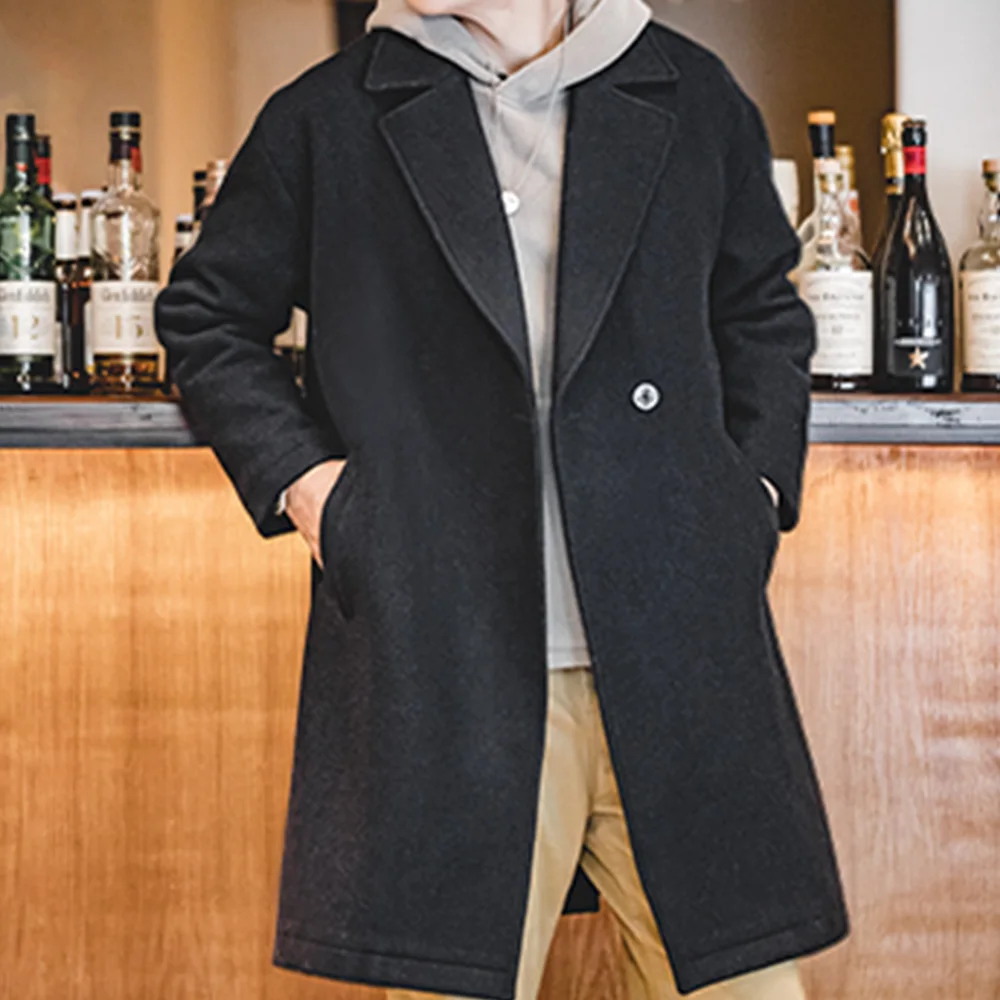
Style considerations often prove decisive when choosing between wool and down overcoats, as these materials project distinctly different aesthetic impressions.
Wool: Timeless Sophistication
Wool overcoats embody classic elegance with silhouettes that have remained largely unchanged for decades:
- Chesterfield: Single-breasted with a velvet collar, projecting refined sophistication
- Peacoat: Double-breasted with broad lapels, offering nautical-inspired ruggedness
- Top coat: Lightweight wool coat ending at mid-thigh, perfect for transitional weather
The natural drape of wool creates clean lines that complement formal attire beautifully. Available in classic neutrals like black, navy, and camel as well as subtle patterns like herringbone, wool overcoats integrate seamlessly with business and formal wear.
Down: Technical Performance
Down coats traditionally emphasized function over fashion, but modern designs have evolved considerably:
- Urban parkas with streamlined silhouettes
- Technical designs with articulated sleeves and ergonomic features
- Varied lengths from waist to ankle
While historically more casual, premium down coats now span from sporty to sophisticated. The inherent puffiness of down creates a distinctive silhouette that signals winter readiness but may appear too casual for formal business environments.
Understanding coat length style principles helps balance these aesthetic considerations with practical needs. Our collection of men’s wool coats showcases the range of styles available in this versatile material.
For versatility across different settings, wool typically offers greater adaptability, transitioning effortlessly from office to evening events. Down excels in clearly casual or outdoor-focused contexts where its technical appearance aligns with functional expectations.
7. Practical Usage Scenarios: When to Choose Each
Making the optimal choice between wool and down often comes down to matching the material to your specific lifestyle needs and usage scenarios.
Business and Formal Settings
For professional environments where appearance matters greatly, wool overcoats hold a clear advantage:
- Project traditional professionalism and refinement
- Complement suits and business attire seamlessly
- Appropriate for client meetings, formal events, and upscale venues
- Maintain structured appearance throughout the day
Urban Daily Use
For everyday city life and commuting, both materials offer distinct benefits:
- Wool provides:
- Reliable performance across changing conditions
- Less concern about light rain or snow
Appropriate appearance for varied social contexts
Down excels with:
- Lighter weight for comfortable commuting
- Easy packing when moving between environments
- Superior warmth during long outdoor waits
Travel Considerations
When traveling in winter, packability and versatility become crucial:
- Down compresses remarkably well, fitting into carry-ons
- Wool maintains its shape better but requires more space
- Down’s lighter weight reduces fatigue during long travel days
Extreme Weather Conditions
In truly frigid environments, specialized performance takes precedence:
- High-fill-power down (800+) in a technical shell offers unmatched warmth for extreme cold
- Wool-down hybrids provide balanced performance for varied conditions
Discovering the best wool overcoats for winter warmth can help you identify options that maximize heat retention while maintaining classic style.
The ideal choice ultimately depends on your primary use case, with many discerning individuals eventually owning both—wool for business and formal occasions, down for casual and extreme weather situations.
8. Durability and Longevity: The Investment Perspective

Quality overcoats represent significant investments, making durability and longevity essential considerations. Both wool and down can provide excellent service life, but they age differently and develop distinct wear patterns.
Expected Lifespan
With proper care, premium overcoats in either material should deliver impressive longevity:
- Quality wool overcoats: 10-15+ years of regular winter use
- Premium down coats: 7-12+ years depending on construction
The difference lies primarily in how each material ages and what typically causes failure.
Common Wear Patterns
Wool coats generally fail through:
– Wear at cuffs and collar edges
– Thinning at elbows and other high-friction points
– Button thread deterioration
– Lining deterioration (often before the wool itself)
Down coats typically experience:
– Shell fabric tears or abrasion
– Seam failures allowing down leakage
– Compression of down leading to reduced loft
– Zipper or closure mechanism failures
Understanding how coat length affects wear patterns can help you choose a design that maximizes durability for your specific usage.
Repairability
Both materials offer good repairability, but through different approaches:
- Wool can be rewoven, patched invisibly, or reinforced at wear points
- Down coats can receive shell repairs, down replenishment, and closure replacement
The superior construction quality found in premium overcoats significantly extends lifespan. Look for reinforced seams, quality hardware, and attention to detail at stress points when evaluating potential purchases.
9. Maintenance and Care Requirements
The care requirements for wool and down overcoats differ significantly, with each material demanding specific maintenance approaches to preserve appearance and performance.
Wool Care Essentials
Regular Maintenance:
– Brush after wearing to remove surface debris
– Use a lint roller for dust and hair
– Air out for 24 hours between wearings
– Spot clean minor stains promptly with wool-safe cleaner
Seasonal Care:
– Professional dry cleaning 1-2 times per season (not more frequently)
– Store on shaped, broad wooden hangers
– Use breathable garment bags during off-season
– Add cedar blocks to deter moths
Down Care Essentials
Regular Maintenance:
– Shake gently after wearing to redistribute down
– Spot clean shell with technical fabric cleaner
– Allow full drying before compressing or storing
– Fluff regularly to maintain loft
Seasonal Care:
– Wash using down-specific detergent every 1-2 years
– Dry thoroughly with clean tennis balls to restore loft
– Store uncompressed in cool, dry location
– Avoid prolonged compression during storage
Addressing Common Issues
For wool overcoats:
– Pilling: Remove with fabric shaver designed for wool
– Small tears: Repair promptly with matching thread
– Button security: Reinforce loosening buttons immediately
For down coats:
– Feather leakage: Repair tiny holes immediately
– Loft restoration: Tumble dry on low with clean tennis balls
– Odor development: Specialized down wash followed by thorough drying
Our collection of wool blend coats offers options that may require less intensive maintenance while providing similar benefits to pure wool.
10. Cost Considerations: Value for Money
Investment in a quality overcoat requires understanding the value proposition of each material across different price points and over the long term.
Price Range Comparison
| Quality Level | Wool Overcoats | Down Overcoats |
|---|---|---|
| Entry-level | $200-350 | $150-300 |
| Mid-range | $350-700 | $300-600 |
| Premium | $700-2,000+ | $600-1,500+ |
Cost Factors
The price of wool overcoats varies based on:
– Wool quality (regular wool vs. merino or cashmere blends)
– Construction techniques (fully canvassed vs. fused)
– Fabric weight and finishing
– Design complexity and detailing
Down coat pricing reflects:
– Fill power rating (higher = more expensive)
– Down-to-feather ratio (more down = higher cost)
– Shell fabric technology
– Technical features and construction methods
Long-term Value Assessment
While quality down coats often cost less initially than equivalent wool options, the total ownership cost should consider:
- Cleaning and maintenance expenses
- Potential repairs over time
- Versatility across different settings
- Resale value (wool often retains value better)
When calculated on a cost-per-wear basis over 10+ years, premium overcoats in either material typically deliver excellent value despite their higher initial investment. The most cost-effective choice ultimately depends on your specific usage patterns and care commitment.
11. Sustainability and Ethical Considerations
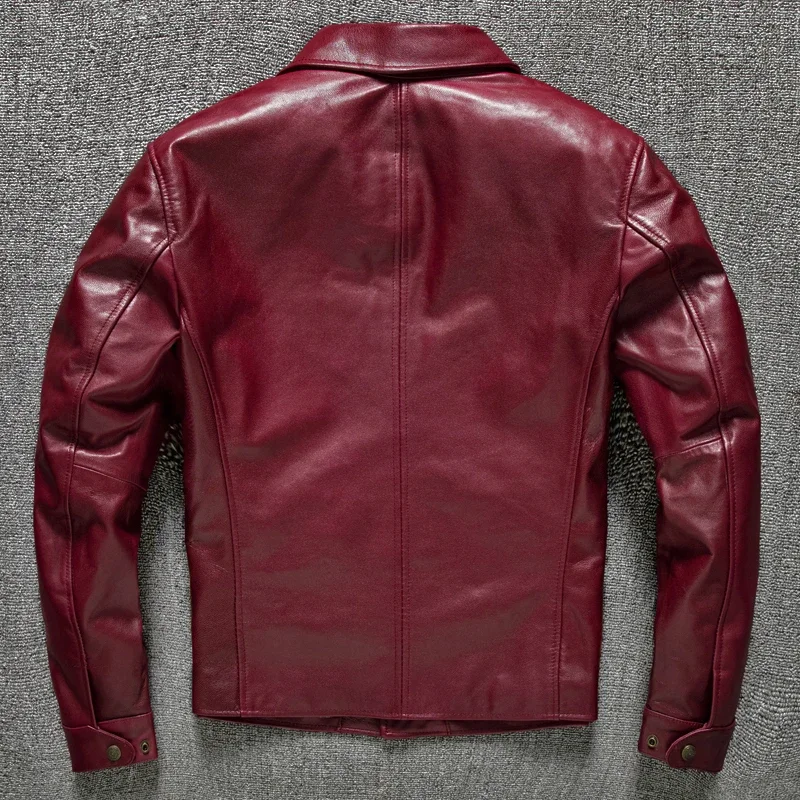
As consumers become increasingly conscious of their purchasing impacts, the ethical and environmental implications of wool and down production merit careful consideration.
Animal Welfare Concerns
Both materials raise specific animal welfare considerations:
Wool Production:
– Mulesing practices (removing skin from sheep’s hindquarters)
– Shearing stress and potential injuries
– Animal living conditions
Down Sourcing:
– Live-plucking concerns
– Force-feeding in connection with foie gras production
– Sourcing transparency issues
Certification Standards
Look for these key certifications to ensure responsible sourcing:
- Responsible Wool Standard (RWS): Certifies wool from sheep treated with respect for their welfare
- Responsible Down Standard (RDS): Ensures down comes from animals that have not been subjected to unnecessary harm
- Global Traceable Down Standard (Global TDS): Verifies that down is sourced from humanely treated birds
Environmental Impact
The environmental footprint differs significantly between materials:
- Wool is biodegradable and renewable but involves land use and methane emissions from sheep
- Down is biodegradable but energy-intensive to clean and process
- Both require resources for manufacturing and transportation
- Down’s shell fabrics are typically synthetic and petroleum-derived
Innovations in insulated wool overcoat technology are creating more sustainable options that combine the benefits of both materials while addressing ethical concerns.
Consumers prioritizing sustainability should seek transparent sourcing information and consider the full lifecycle impact of their purchase, including longevity and end-of-life biodegradability.
12. Decision Framework: Which Overcoat Is Right for You?
After considering all factors, choosing between wool and down ultimately comes down to matching material properties with your personal priorities and circumstances.
Choose Wool If:
- You need versatility across business and formal settings
- Your typical winter conditions include light rain or wet snow
- You prioritize classic styling and sophisticated appearance
- You prefer consistent warmth without overheating
- You value long-term durability and classic investment pieces
- Your temperatures rarely drop below 15-20°F (-9 to -6°C)
Choose Down If:
- You experience extremely cold, dry winter conditions
- You prioritize lightweight warmth without bulk
- Your lifestyle involves significant outdoor activity
- You travel frequently and value packability
- You have limited storage space
- You need maximum thermal protection in sub-zero temperatures
Mens Heavy Winter Coat, Mens Insulated Coat, Mens Parka Coat
Price range: $175.52 through $237.36 Select options This product has multiple variants. The options may be chosen on the product pageMens Big and Tall Winter Coats, Mens Down Coat, Mens Hooded Winter Coat, Mens Puffer Coat
Price range: $126.44 through $217.01 Select options This product has multiple variants. The options may be chosen on the product pageMens Double Breasted Pea Coat, Mens Wool Blend Coat, Mens Wool Pea Coat
Price range: $136.84 through $157.36 Select options This product has multiple variants. The options may be chosen on the product pageMens Cashmere Overcoat, Mens Hooded Winter Coat, Mens Wool Blend Coat
Price range: $128.72 through $139.68 Select options This product has multiple variants. The options may be chosen on the product pageMens Hooded Winter Coat, Mens Insulated Coat, Mens Puffer Coat, Mens Quilted Coat
Price range: $139.88 through $177.72 Select options This product has multiple variants. The options may be chosen on the product pageMens Black Overcoat, Mens Black Wool Coat, Mens Wool Overcoat
$339.18 Select options This product has multiple variants. The options may be chosen on the product page
Climate-Based Guidance
For mild winters (rarely below freezing):
A lighter wool overcoat typically provides sufficient warmth with better versatility.
For moderate winters (occasional below-freezing days):
Either material works well, with wool offering better versatility and down providing greater warmth on the coldest days.
For severe winters (extended periods below 15°F/-9°C):
Down typically delivers superior performance, though heavy wool with proper layering remains viable.
Explore our long winter coat collection for maximum protection in challenging conditions.
Hybrid Considerations
Many modern overcoats incorporate elements of both materials:
– Down coats with wool blend shell fabrics
– Wool overcoats with down or synthetic insulated linings
– Modular systems with detachable components
These hybrid approaches can deliver excellent performance for those unwilling to compromise on specific benefits of each material.
13. Frequently Asked Questions
Is wool or down warmer for extreme cold?
Down provides superior warmth in extremely cold, dry conditions due to its exceptional insulation-to-weight ratio. High fill-power down (800+) traps more body heat than an equivalent weight of wool. However, when moisture is present, wool maintains warmth better than untreated down.
Can wool overcoats be worn in rain or snow?
Yes, wool naturally repels light precipitation and continues insulating even when damp. While not waterproof, wool overcoats handle light rain and snow effectively. For heavier precipitation, consider a water-resistant treated wool coat or layer with a rain shell.
Are all down coats waterproof?
No. Down coats require a waterproof shell fabric to resist precipitation, and many fashion-oriented down coats prioritize appearance over water resistance. Technical down coats often feature waterproof membranes and sealed seams, while casual styles may offer only basic water repellency.
How do I prevent pilling on wool overcoats?
Prevent pilling by brushing your wool coat regularly with a garment brush, avoiding friction with rough surfaces, and limiting wear with abrasive bags or backpacks. For existing pills, use a fabric shaver designed specifically for wool garments.
What does “fill power” mean in down coats?
Fill power measures how many cubic inches one ounce of down fills under standard testing conditions. Higher numbers (600-900) indicate better quality down with larger clusters that trap more air for superior insulation with less weight. Premium coats typically use 700+ fill power.
How long should a quality wool or down coat last?
A high-quality wool overcoat properly cared for should last 10-15+ years of regular winter use. Premium down coats typically last 7-12+ years before significant performance degradation. Both estimates assume proper maintenance, storage, and occasional professional cleaning.
How do I restore loft to a flattened down coat?
Restore loft by tumble drying the clean coat on low heat with several clean tennis balls to break up clumped down. For spot treatment, gently massage flattened areas between your fingers to separate clumped clusters. Never store down compressed for extended periods.
14. Supplemental Content: Innovative Developments in Overcoat Technology
The overcoat market continues to evolve with technological advancements that enhance the performance of traditional materials while addressing their inherent limitations.
Modern Wool Innovations
Recent developments in wool processing have produced remarkable improvements:
- Nano-scale treatments creating genuinely waterproof wool without compromising breathability
- Ultra-fine wool weaves providing down-like lightness with wool’s natural advantages
- Technical wool blends incorporating ceramic particles for enhanced heat reflection
- Memory wool that resists wrinkles and maintains shape better than traditional wool
Down Technology Advancements
Down insulation has seen equally impressive innovation:
- Hydrophobic treatments that maintain 90%+ of down’s insulating capacity when wet
- Baffle designs that prevent down migration and eliminate cold spots
- Transparent supply chain tracking from farm to finished garment
- Recycled down options recovering insulation from post-consumer products
Hybrid Approaches
Perhaps most exciting are the hybrid designs combining the best aspects of both materials:
- Down-insulated wool shells providing classic appearance with enhanced warmth
- Wool-insulated technical shells offering natural fiber benefits with improved weather resistance
- Modular systems with interchangeable components for different conditions
- Zone-specific insulation placing each material where its properties are most beneficial
These innovations continue to blur the traditional lines between wool and down overcoats, potentially offering the best of both worlds as technology advances. However, traditional constructions in premium materials continue to deliver proven performance for those who appreciate classic design and time-tested functionality.

